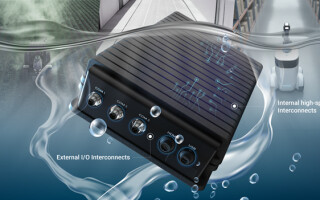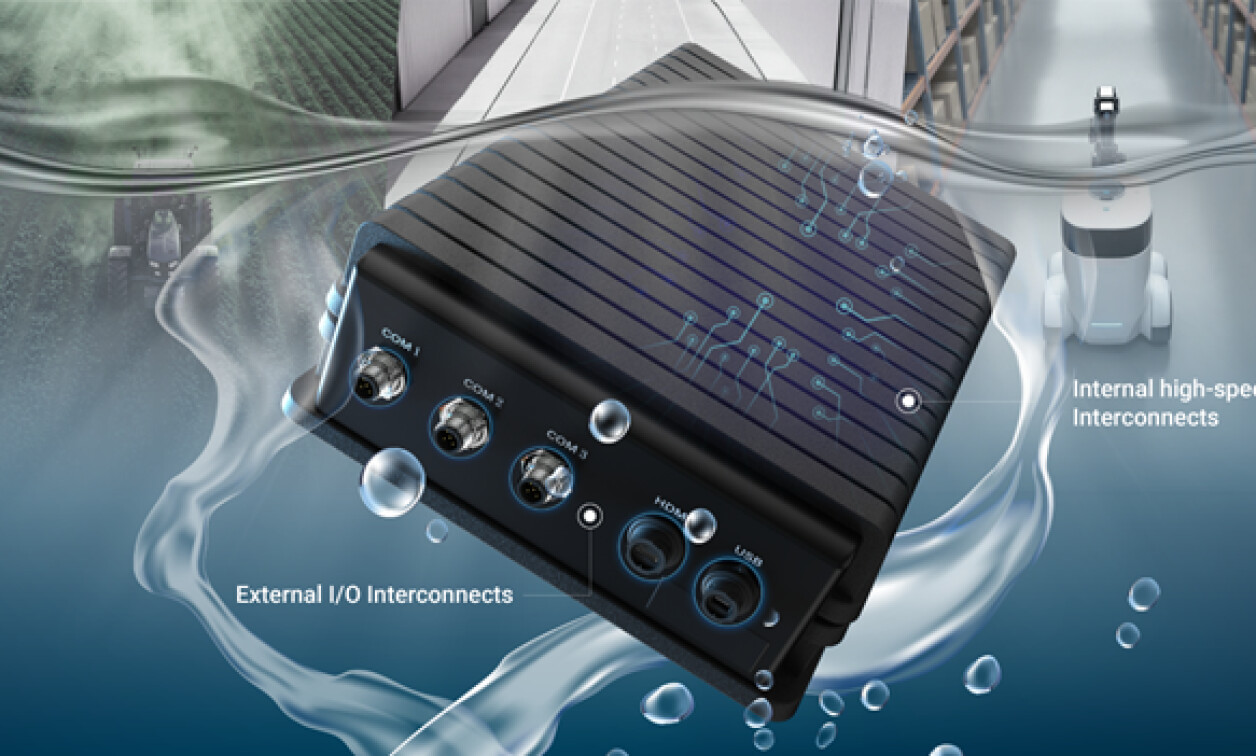October 08, 2025
Blog

Image Credit: ATTEND
The most exciting AI applications are all at the Edge these days. In industrial automation, autonomous vehicles, and remote asset monitoring, Edge AI is where the innovation and execution are most rapidly advancing.
The challenges of AI at the Edge are as large as the advantages, however. One of the biggest challenges and key enablement technologies is connectivity. Edge processing and AI at the Edge require reliability, low latency, and resiliency in the harshest of environments. Without good connections to the network, many of the advantages of Edge AI are diminished, or lost entirely.
A truly rugged Edge AI system requires a dual focus on connectivity, according to the experts at ATTEND. It needs both robust external I/O to interface with the outside world, and high-speed, resilient internal interconnects to manage data flow within the computing module.
External connectors link to sensors, actuators, cameras, and the broader network. They are the most exposed components and must provide a secure, sealed interface against environmental hazards. Key technologies in this space include M12 connectors for environmental protection, waterproof USB-C connectors, and Single Pair Ethernet (SPE) to simplify cabling.
Inside the computer, multiple interconnects between PCBs face challenges from shock, vibration, and thermal expansion. They also need to support data rates for protocols like PCIe. To meet these needs, use floating board-to-board connectors, PCIe M.2 Gen 5 connectors, MXM connectors, and Pogo Pin connectors.
Addressing the diverse connectivity needs of Edge AI requires a portfolio of specialized solutions. The following technologies are engineered to meet the challenges of performance and reliability in harsh environments.

Single Pair Ethernet (SPE)
SPE is designed to bring Ethernet to the operational edge by replacing legacy fieldbus architectures. It transmits data over a single twisted pair of wires, which reduces cable size and weight, simplifies installation, and delivers up to 52 watts of power over the same data line, eliminating the need for separate power cables for many devices.
Waterproof USB Type-C
With IP67 or IP68 protection ratings, Waterproof USB Type-C connectors provide protection in wet and dusty environments, while supporting data rates up to 40 Gb/s, making them ideal for applications requiring rapid data exchange, anywhere. They can also deliver up to 240W of power, so energy supply is no problem, even in high-performance cases.
M12 Connectors
M12 connectors are circular connectors with a 12mm locking thread, most well-known for being robust in any industrial settings. They provide IP67 and higher ratings, providing protection against dust and water, while the screw-locking mechanism offers a stable connection that will not disconnect under heavy vibration or shock.
FAKRA and Mini-FAKRA
FAKRA (Fachkreis Automobil) connectors are a type of SMB coaxial connector embedded within a plastic housing that includes a locking mechanism and color-coding to prevent mismating. FAKRA is widely used in automotive telematics and entertainment, and the recent evolution to Mini-FAKRA has become critical for modern Edge AI systems.
Mini-FAKRA connectors are engineered for frequencies up to 20 GHz and data rates up to 28 Gbps, more than sufficient for raw data from high-resolution cameras, radar, and LiDAR sensors, and the color-coded and mechanically keyed housings make it impossible to connect the wrong cables, ensuring system integrity during assembly and maintenance.
Floating Board-to-Board Connectors
Floating board-to-board connectors are designed to ensure reliable connections in dynamic, high-vibration environments. They have a built-in mechanism that allows for a degree of movement between the mated connectors, which automatically corrects for slight misalignments that occur during PCB assembly, reducing manufacturing defects.
PCIe M.2 Gen 5
The PCIe M.2 Gen 5 connector series is designed to meet the demands of next-generation Edge AI and high-performance computing applications, from the ground up. These connectors comply with the PCIe Gen 5.0 specification, support transfer rates up to 32 Gb/s, carry 67 contacts configured in a 0.50mm precision pitch to maximize signal transmission capacity within the footprint, and use impedance-matched transmission paths to maintain signal quality during high-frequency operations.
MXM Connectors
Mobile PCI Express Modules (MXM) connectors are high-density interconnect solutions designed for modular computing systems. ATTEND’s MXM 3.0 connector series is designed to provide rich I/O functionality within a compact form factor, serving as a bridge between standardized computing modules like SMARC and their carrier boards, and is suited for edge computing applications requiring high-performance graphics processing or AI acceleration.
Pogo Pin Connectors
Pogo Pin (spring-loaded) connectors are temporary-contact interconnect solutions designed for the flexible connectivity needs of modern embedded systems. Their unique spring-compression structure can withstand thousands of mating cycles while maintaining stable electrical connections in environments with misalignment or vibration. The built-in flexible design automatically accommodates minor misalignment between boards, and the compact pin design supports high-density arrangements.
The transition to Edge AI is not just a software challenge; it is a hardware and systems engineering challenge. The key to overcoming this dual challenge is to engage with a partner like ATTEND, who will understand that the reliability of an advanced AI model is ultimately dependent on the physical-layer components that capture and transmit its data.
By offering a comprehensive portfolio that addresses connectivity from the external sensor to the internal processor module, ATTEND can help you to build end-to-end systems that are both powerful and resilient. To meet with ATTEND and see all that they are doing to advance and enable true intelligence at the Edge, meet with them at embedded world North America in November at the Anaheim Convention Center.
Success in the Edge AI era will belong to those who build their intelligent systems on a foundation of uncompromising reliability.


